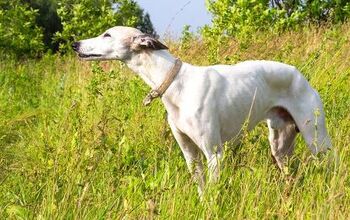Understanding the Basics of Pannus in Dogs

Also known as chronic superficial keratitis, pannus is a condition that affects the cornea in your dog’s eye. Pannus is most commonly seen in middle-aged German Shepherd Dogs, but it can affect other dogs as well. Keep reading to learn more about what pannus is, how it affects your dog, and what you can do about it in terms of treatment.
Clinical Signs and Causes of Pannus in Dogs
Though the exact details are still unknown, it is thought that pannus is a hereditary condition that progresses with age. Pannus can affect dogs of all breeds, but it is particularly common among German Shepherd Dogs, longhaired Dachshunds, Greyhounds, and Border Collies.
Related: What Is Cherry Eye In Dogs?
It is also possible that pannus is an immune-mediated disease which can be exacerbated by certain factors such as exposure to ultraviolet light, smoke, and high altitudes. Pannus involves a progressive change inside the eye where blood vessels and scar tissue actually invade the cornea, causing changes to the surface of the cornea which can result in blindness.
When it comes to diagnosing your dog with pannus, your veterinarian will take into account his medical history as well as any clinical signs. The first sign of pannus usually develops in the form of an elevated pink mass that appears on the lateral or outer side of the cornea. It is a non-painful mass but it can affect your dog’s vision. Pannus usually develops in both eyes, though it is not uncommon for one to be more affected than the other. In many cases, the dog’s third eyelid will also become thickened and inflamed.
As the disease progresses, the elevated pink mass will flatten out and spread across the surface of the cornea, darkening in color and causing scar tissue to form. If left untreated, the dog will become blind. Though this consequence generally cannot be reversed, most dogs actually adapt well to a loss of vision as long as their surrounding are kept fairly stable.
Related: What is Strabismus in Dogs?
Treatment options for pannus in dogs are vast and varied. In most cases, treatment involves the use of topical corticosteroids or some other kind of immune-modulating drug. In dogs that have developed secondary infections, antibiotic eye drops or ointments may also be recommended.
Another common form of treatment is corticosteroid therapy which is injected under the mucus membrane of the eye – the conjunctiva. In cases where the dog does not respond to topical treatments, surgical excision of the mass from the eye may restore vision. There is, however, a fairly high postoperative recurrence rate for this form of treatment and it is generally reserved as a last resort when all other forms of treatment have failed.
Unfortunately, because pannus is an immune-mediated disease it cannot be cured. With proper treatment, however, the progression of the disease can be slowed and your dog’s condition can be managed. Just be sure to stay in contact with your veterinarian and stick to whatever treatment plan the two of you decide is best.

Kate Barrington is the loving owner of two cats (Bagel and Munchkin) and a noisy herd of guinea pigs. Having grown up with golden retrievers, Kate has a great deal of experience with dogs but labels herself a lover of all pets. Having received a Bachelor's degree in English, Kate has combined her love for pets and her passion for writing to create her own freelance writing business, specializing in the pet niche.
More by Kate Barrington























